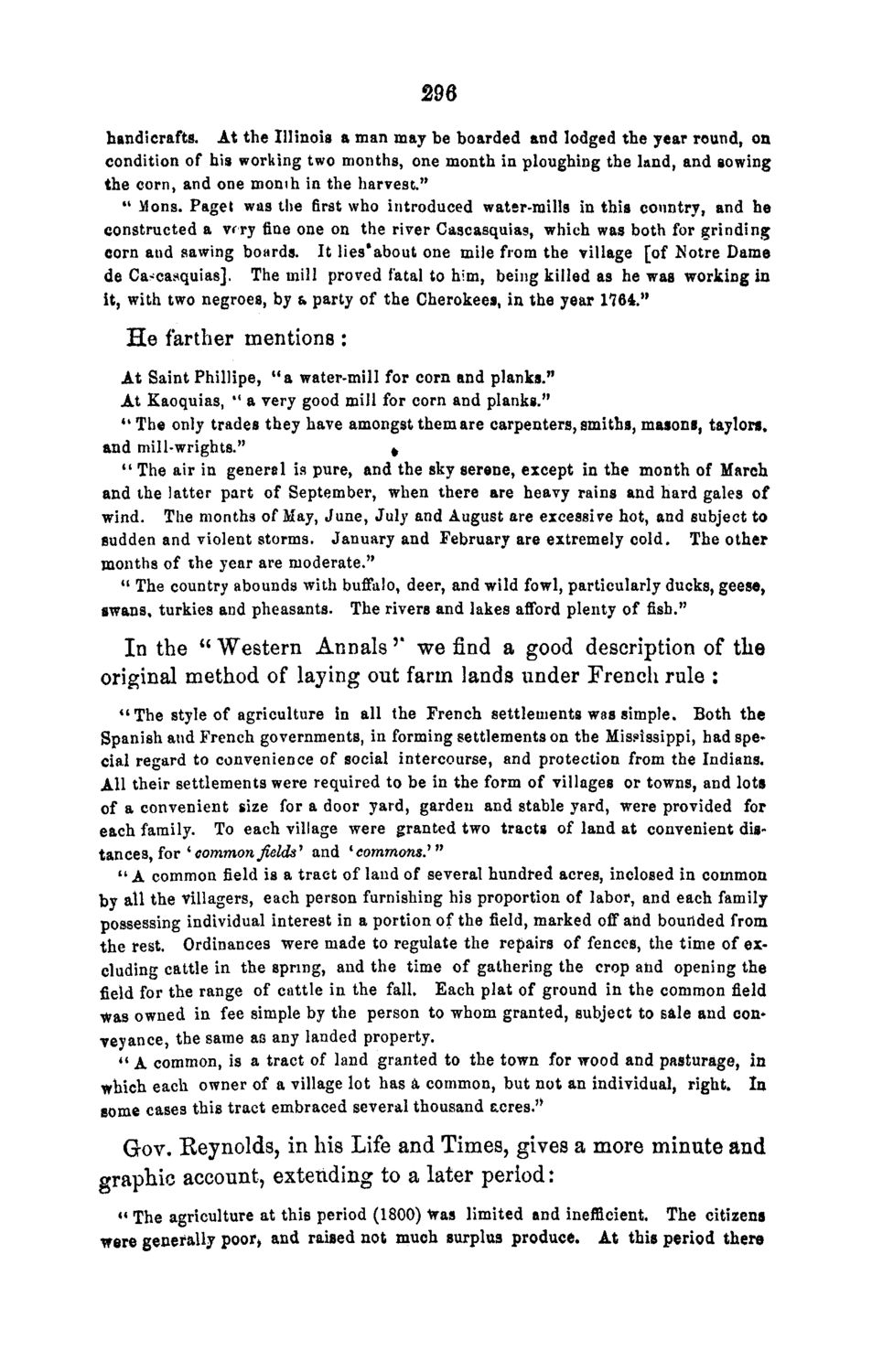| |
| |
Caption: Board of Trustees Minutes - 1868
This is a reduced-resolution page image for fast online browsing.

EXTRACTED TEXT FROM PAGE:
296 handicrafts. At the Illinois a man may be boarded and lodged the year round, on condition of his working two months, one month in ploughing the land, and sowing the corn, and one monih in the harvest." " Mons. Paget was the first who introduced water-mills in this country, and he constructed a vrry fine one on the river Cascasquias, which was both for grinding corn and sawing boards. It lies*about one mile from the village [of Notre Dame de Cascasquias]. The mill proved fatal to him, being killed as he was working in it, with two negroes, by a party of the Cherokees, in the year 1764." He farther mentions: At Saint Phillipe, "a water-mill for corn and planks." At Kaoquias, *' a very good mill for corn and planks." 41 The only trades they have amongst them are carpenters, smiths, masons, taylors. and mill-wrights." # " The air in general is pure, and the sky serene, except in the month of March and the latter part of September, when there are heavy rains and hard gales of wind. The months of May, June, July and August are excessive hot, and subject to sudden and violent storms. January and February are extremely cold. The other months of the year are moderate." " The country abounds with buffalo, deer, and wild fowl, particularly ducks, geese, swans, turkies and pheasants. The rivers and lakes afford plenty of fish." In the "Western Annals'" we find a good description of the original method of laying out farm lands under French rule : " The style of agriculture in all the French settlements was simple. Both the Spanish and French governments, in forming settlements on the Mississippi, had spe* cial regard to convenience of social intercourse, and protection from the Indians. All their settlements were required to be in the form of villages or towns, and lots of a convenient size for a door yard, garden and stable yard, were provided for each family. To each village were granted two tracts of land at convenient distances, for 'commonfields' and 'commons.1" 11 A common field is a tract of land of several hundred acres, inclosed in common by all the villagers, each person furnishing his proportion of labor, and each family possessing individual interest in a portion of the field, marked off and bounded from the rest. Ordinances were made to regulate the repairs of fences, the time of excluding cattle in the spring, and the time of gathering the crop and opening the field for the range of cattle in the fall. Each plat of ground in the common field was owned in fee simple by the person to whom granted, subject to sale and con* Teyance, the same as any landed property. 44 A common, is a tract of land granted to the town for wood and pasturage, in which each owner of a village lot has a common, but not an individual, right. In some cases this tract embraced several thousand acres." Gov. Keynolds, in his Life and Times, gives a more minute and graphic account, extending to a later period: •* The agriculture at this period (1800) was limited and inefficient. The citizens were generally poor* and raised not much surplus produce. At this period there
| |